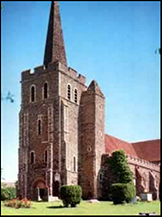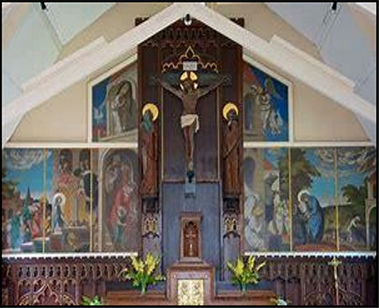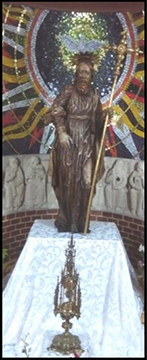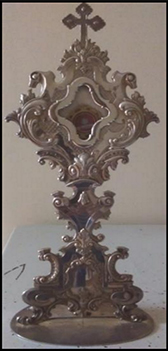Pilgrimage to Minster and Faversham
Minster Abbey (Benedictine)

Pilgrims from the Island visited Minster Abbey in September, 2019. They were familiar (to some extent) with the Benedictine way of life because of Quarr and St. Cecilia’s Abbey. Life today at Minster is deeply rooted in prayer. Interior prayer and liturgical prayer lie at the heart of the contemplative life. It is through the celebration of the liturgy, reflection on the scriptures (lectio divina) and silent adoration that the nuns are called to grow into a deep intimacy with Jesus Christ who is the centre of our lives.

The pilgrims joined the nuns for None (afternoon prayer) and once again were given a guided tour, tracing the history of the abbey, which goes back to the 7th century. It was dissolved, like all the others, at the time of the Reformation and then re-founded in 1937. It has a long and fascinating history:- Click on this link below to learn more:- www.minsterabbeynuns.org

Just less than a mile away is St. Mary’s C.E. Church, Minster. Known as the ‘Cathedral on the marshes’ it is the mother church of western Thanet. Founded in 670AD it was originally both a monastic and a parish church. The first Church was probably built of mud and wood. Close by is the place where St. Augustine landed in 597 to bring Christianity back to this part of Britain.
A guided tour here informed pilgrims that the oldest part of the present building was built just after the Norman conquest with work continuing for about 100 years. The Chancel is Early English in style. The nave has stood in its present form since about 1150.

Later, on the same day, the pilgrims travelled to the National Shrine of St. Jude at Faversham. The Carmelite Friars came to Faversham in 1926 and in doing so refounded the English Province of the Order. What was a small struggling mission in East Ken is now a vigorous parish community and also devotion to St Jude has led to the establishing of a shrine honouring that saint and drawing pilgrims from far and wide.
Next to the Church is a fine 18th century house now known as “Whitefriars”, the home today of the Carmelites who care for the parish and shrine.
The development of the Carmelite Priory at Faversham into a centre of devotion to St Jude arose out of the work of the Carmelite Press. The Press, which is no longer in business, was founded in 1938 to print the materials sent out to clients who, by their donations, supported the work of the Carmelite Friars, then only recently re-established in England. The work of the Press was supervised by the (Carmelite) parish priest, Fr Elias Lynch, who was one of three brothers, Elias, Malachy and Kilian who were all influential in the refounding of the Carmelite Order in Britain.

Saint Jude’s statue is in a grotto just below the church (picture – above). He was one of the Twelve Apostles appointed by Jesus to lead his Church. In the list of the Apostles given in the Gospel accounts he is generally identified with “Thaddeus”.
Fr. Jonathan Redvers Harris led the rosary during Exposition of the Blessed Sacrament and then gave Benediction. Afterwards, a relic of Saint Jude (held in great reverence at Faversham) was venerated (picture – below).

It used to bless oil which people use as part of their prayer in asking for God’s gift of healing.
The National Shrine of Saint Jude at Faversham was built in the 1950s. Carmelites try to nurture a close relationship with Christ and his family – especially Mary the Mother of God – and so perhaps it was natural that devotion to Jude, Apostle and Kinsman of Christ, should have become popular in Carmelite communities, not only in Faversham but around the world.